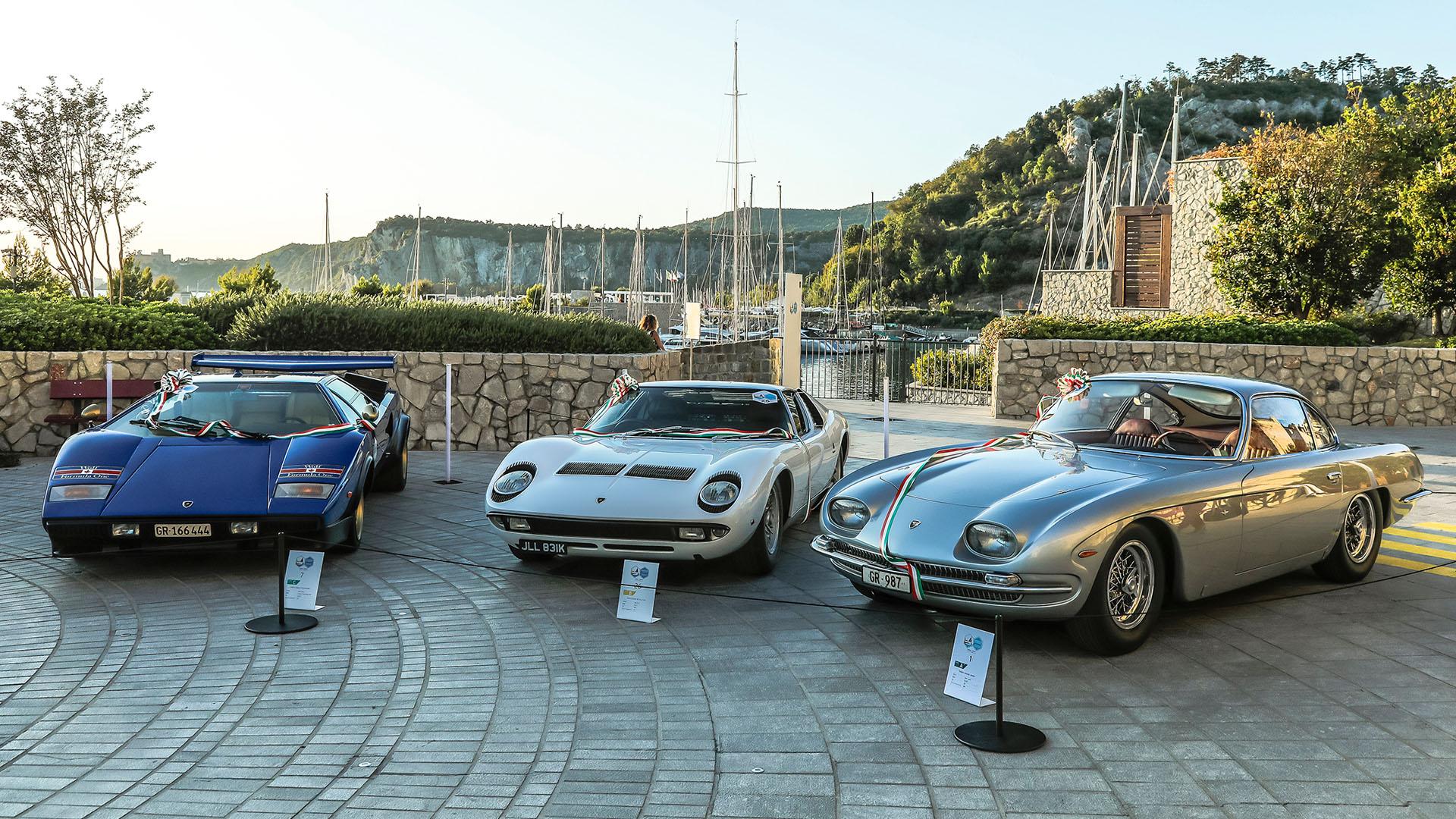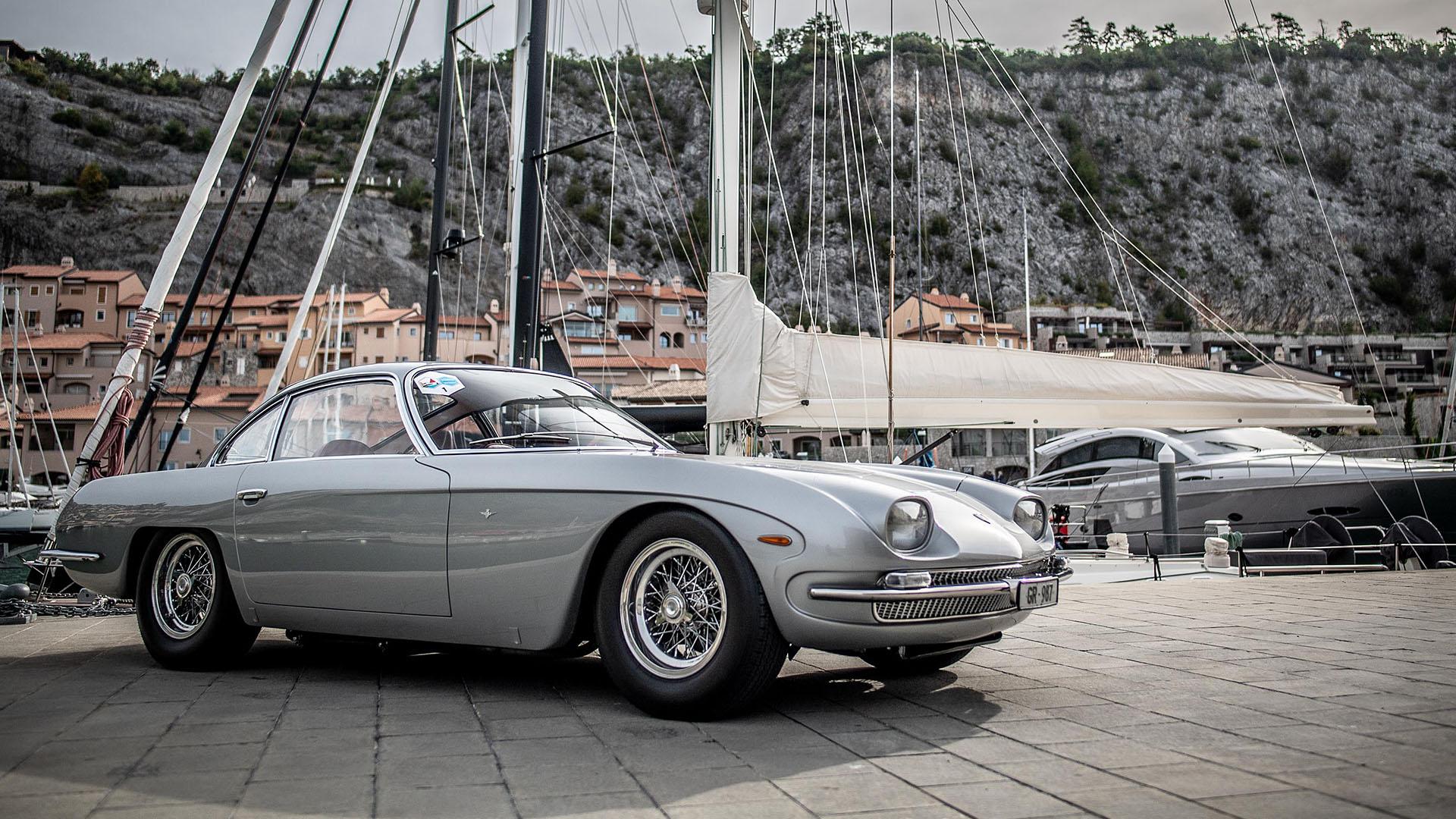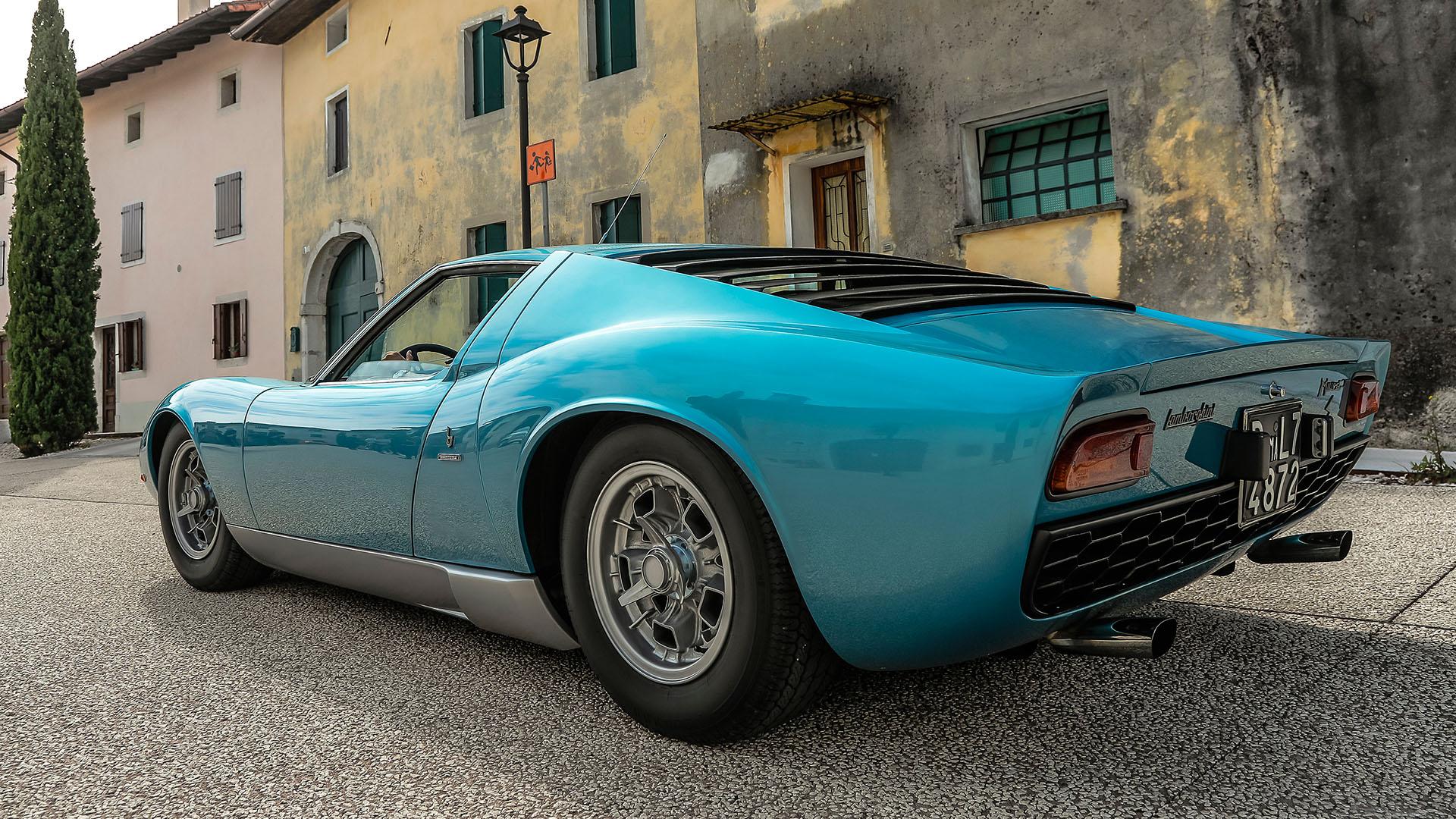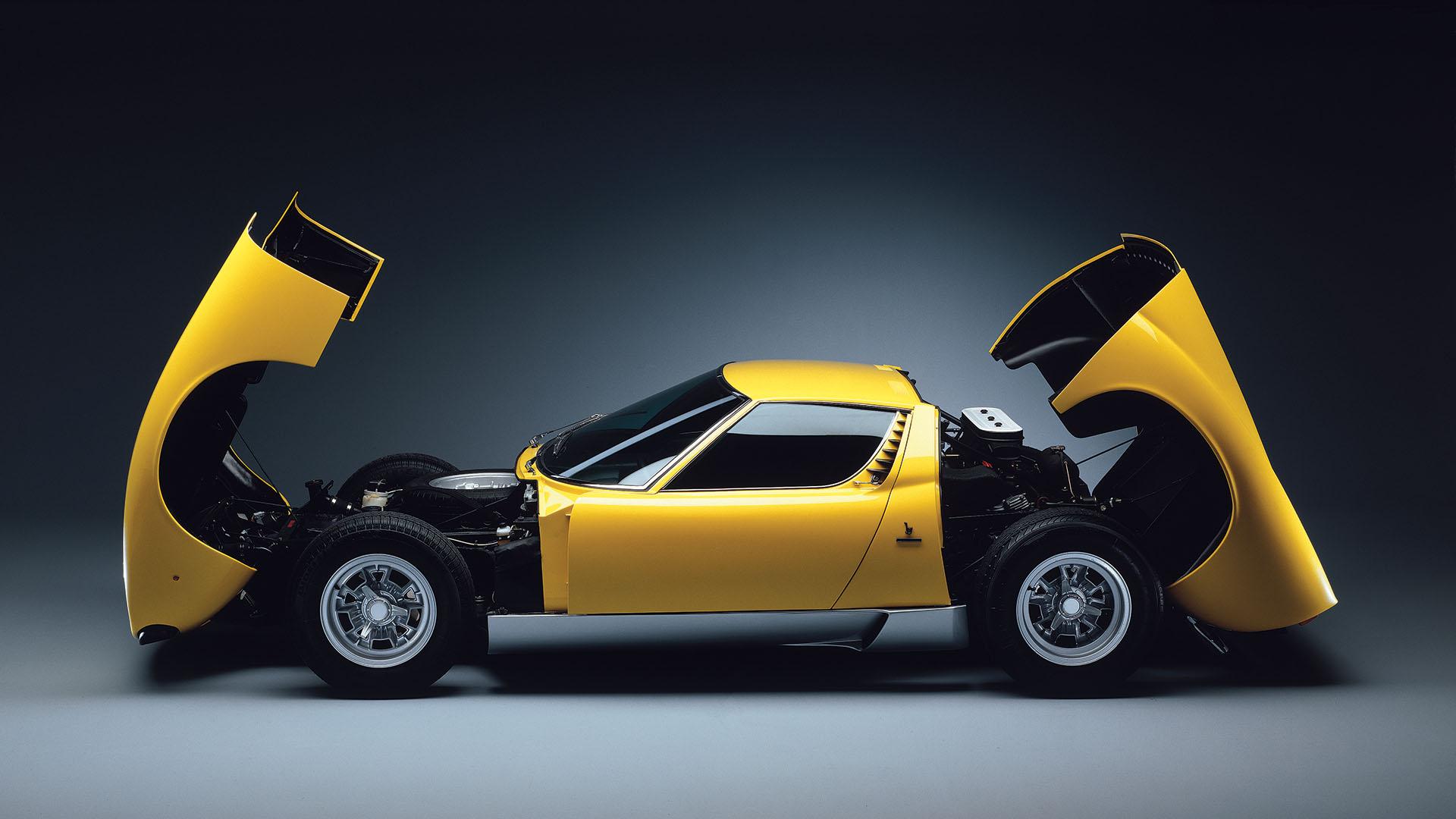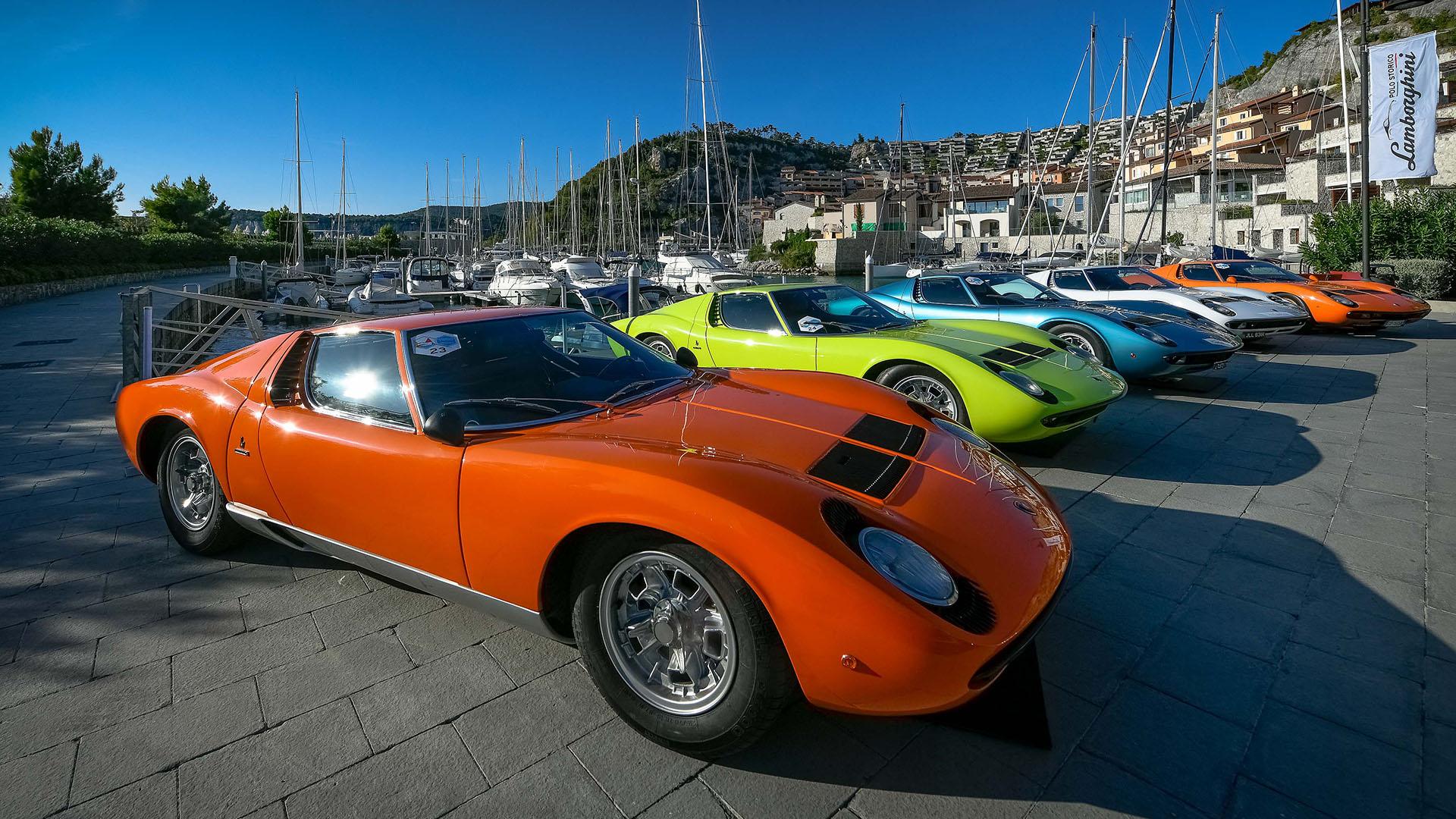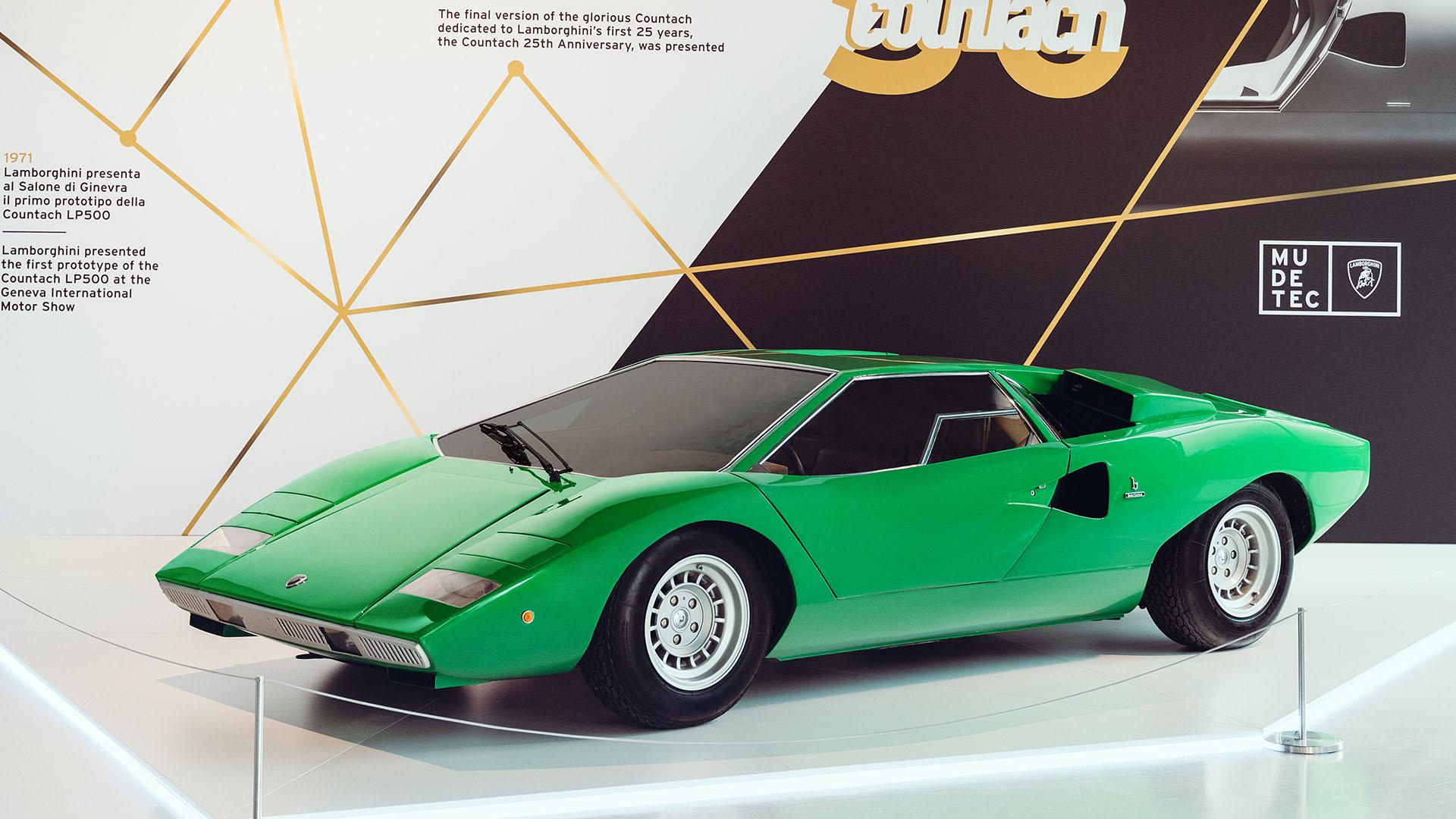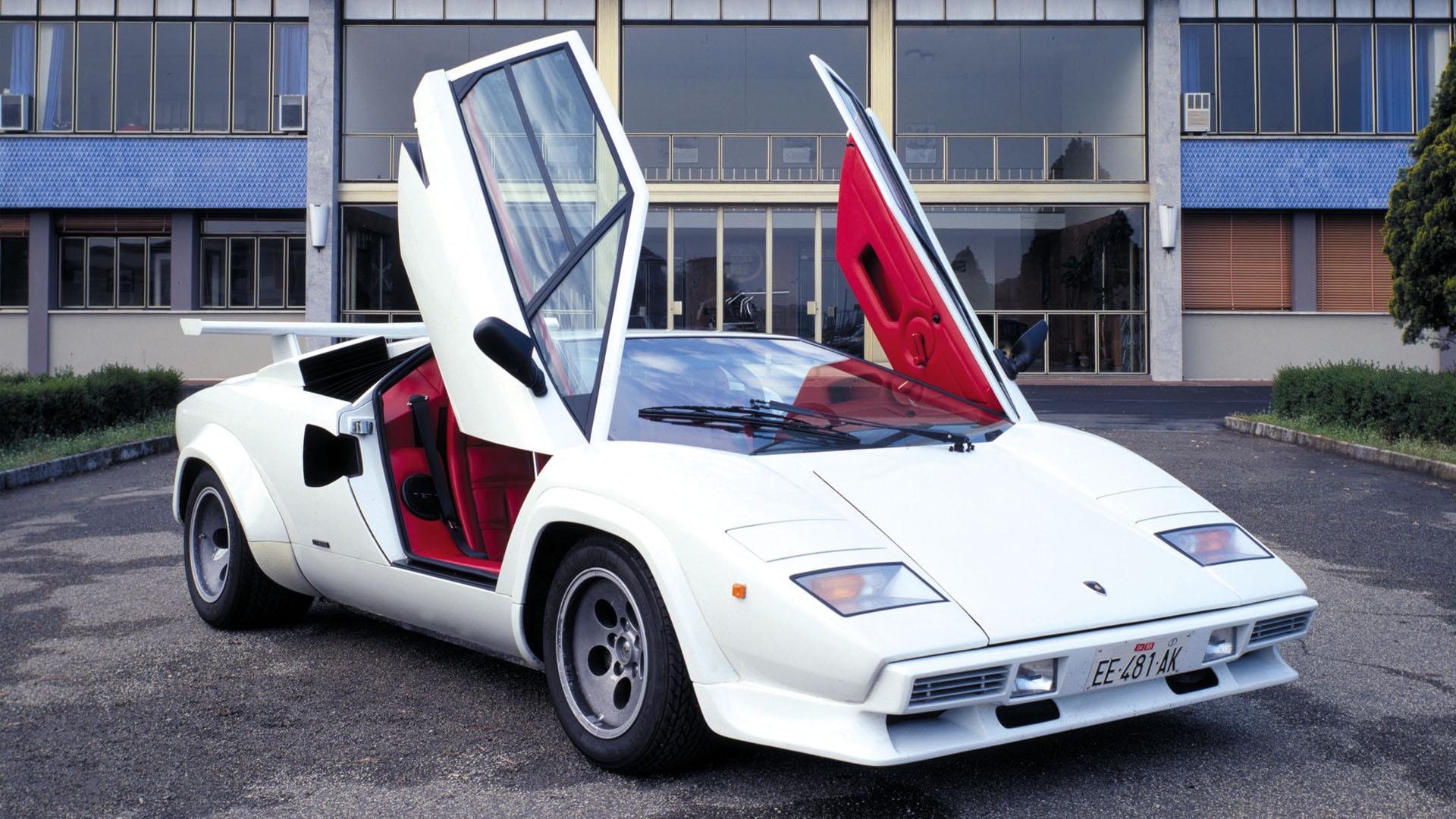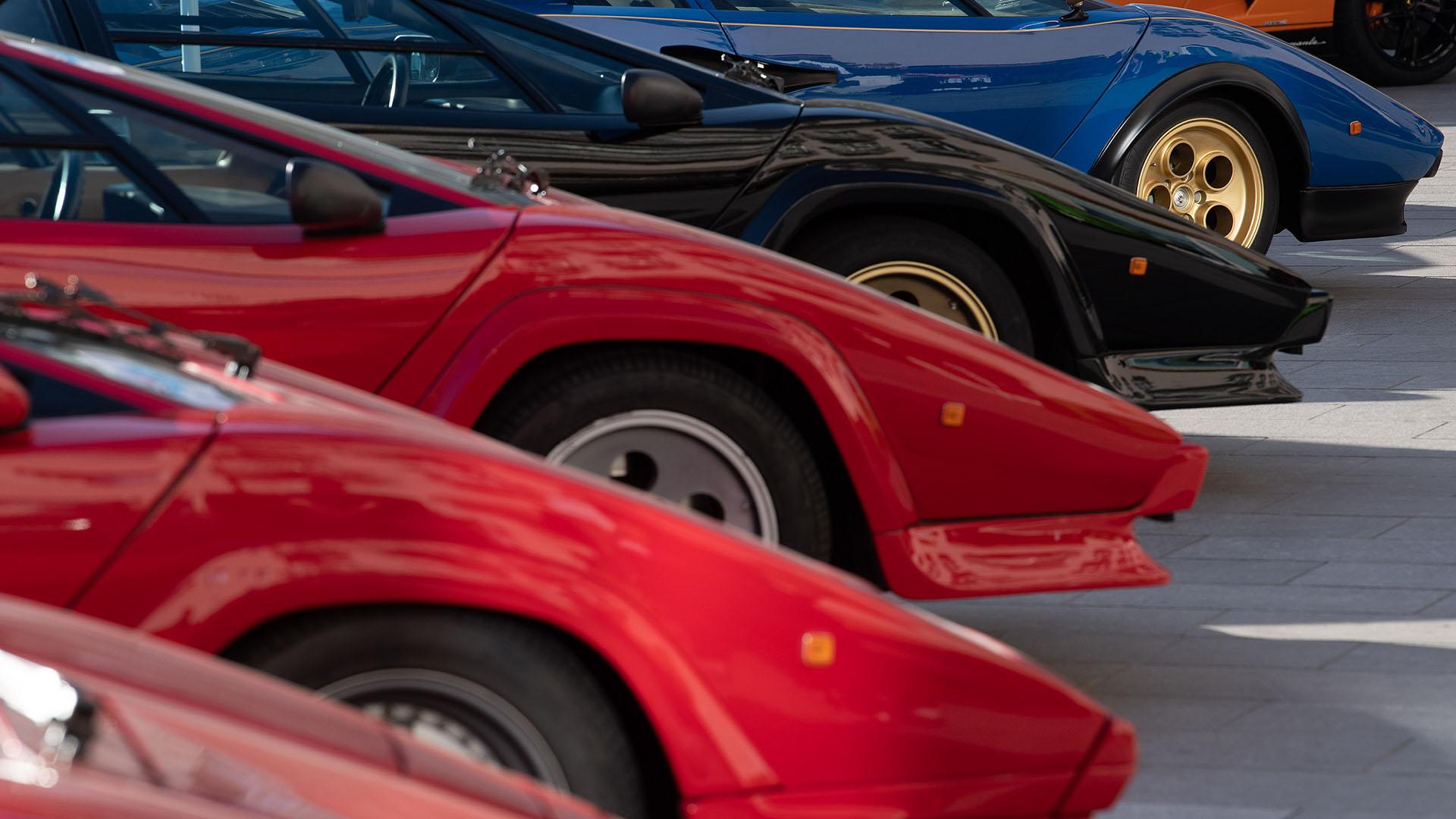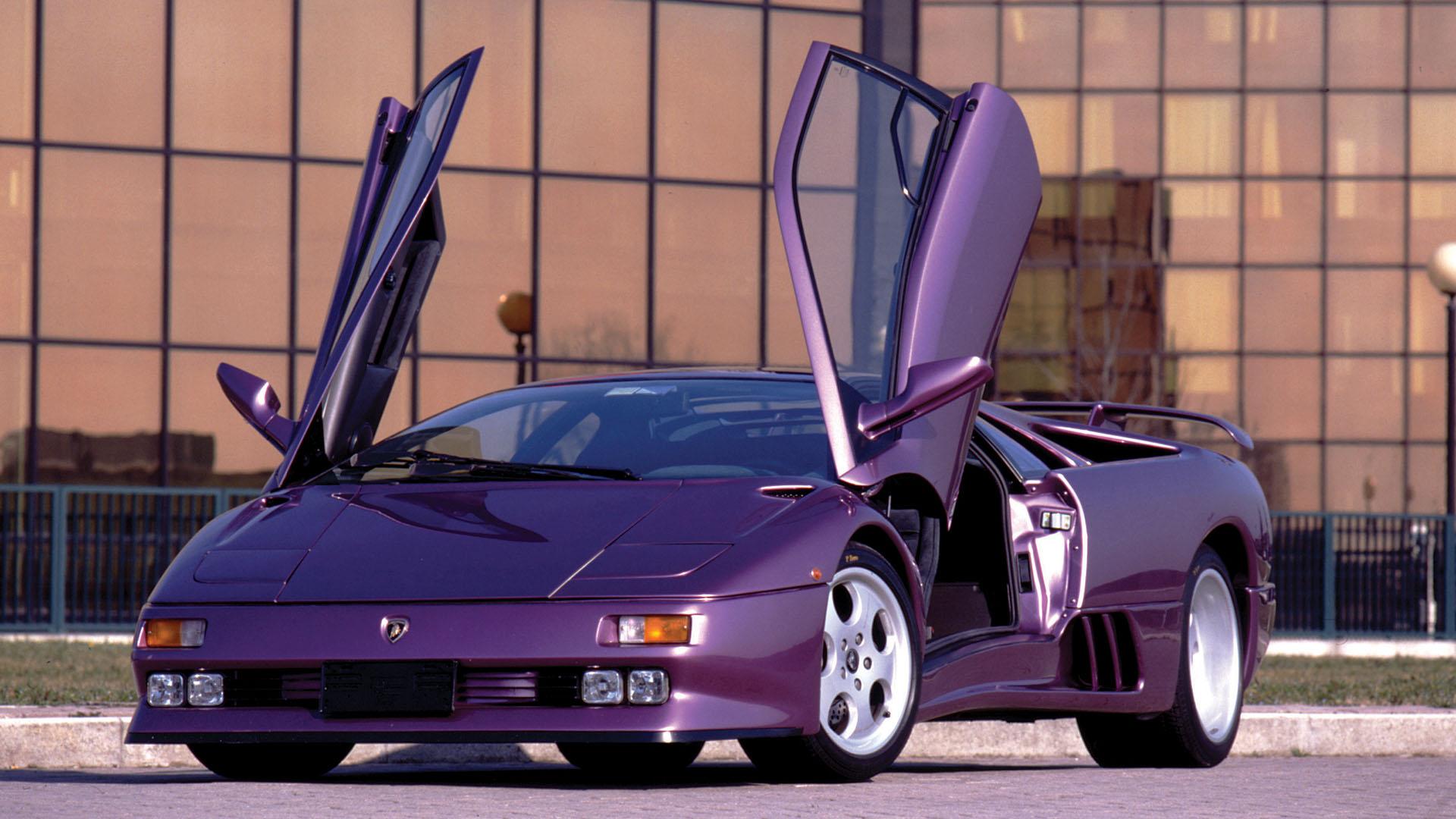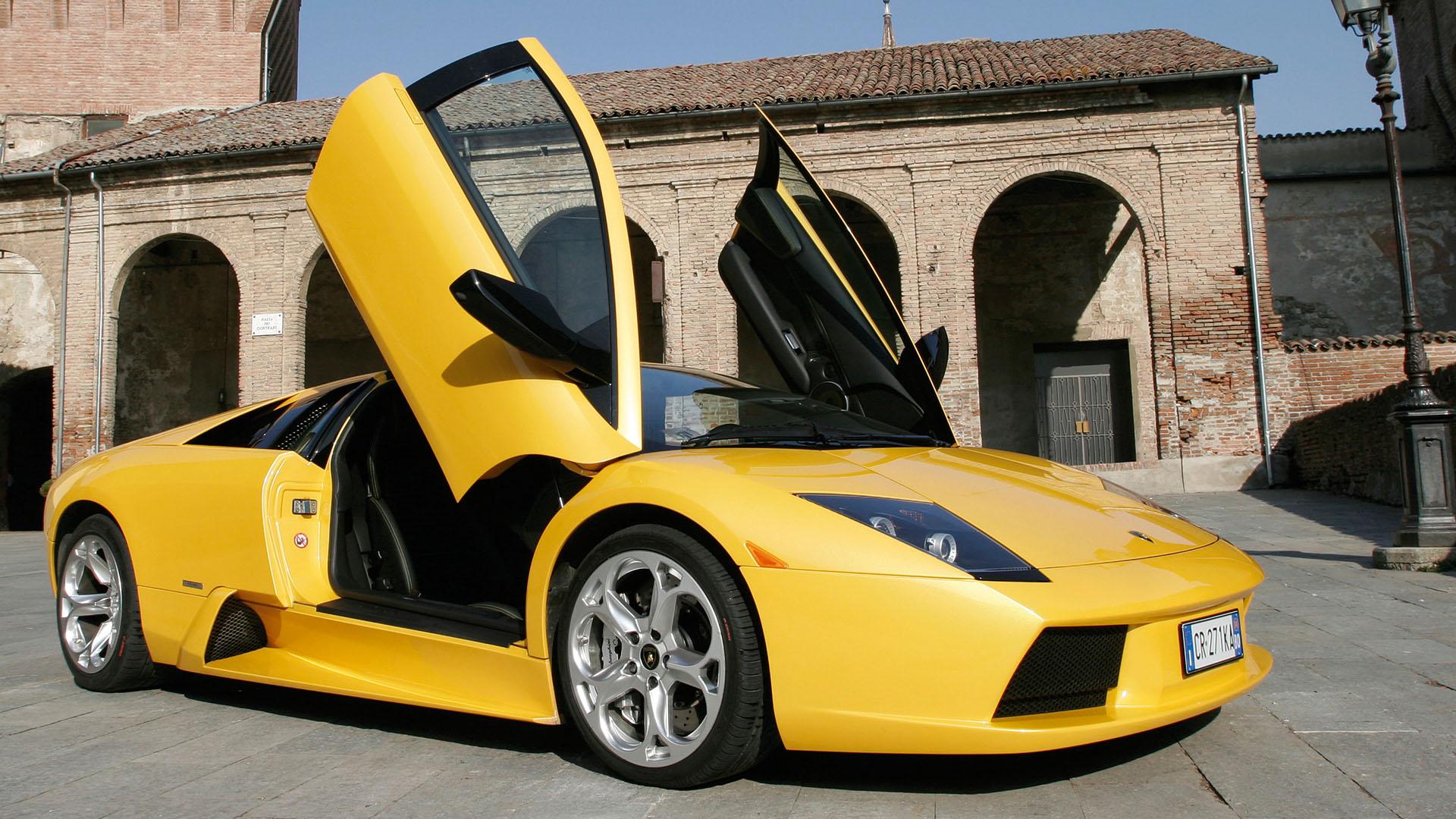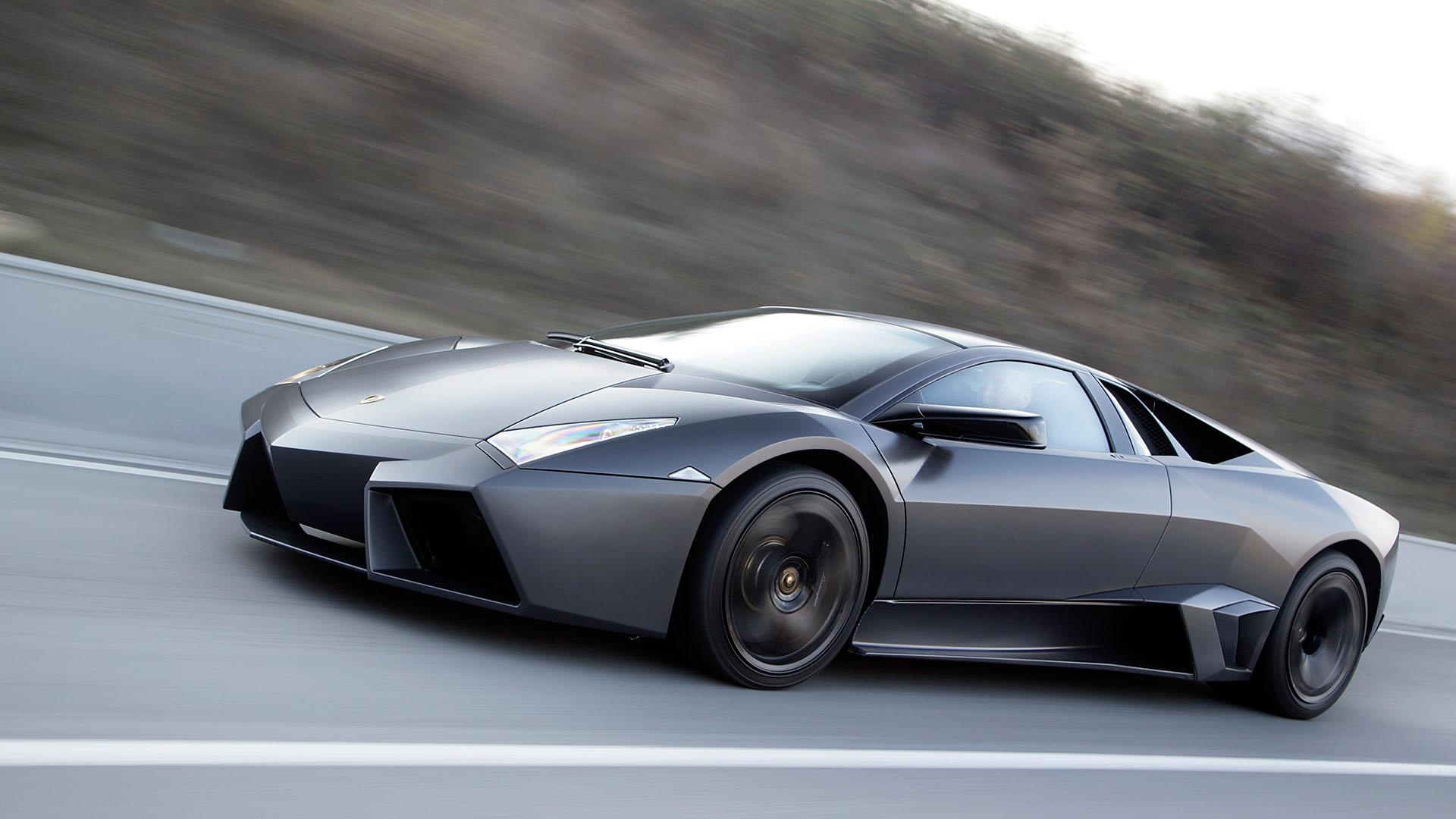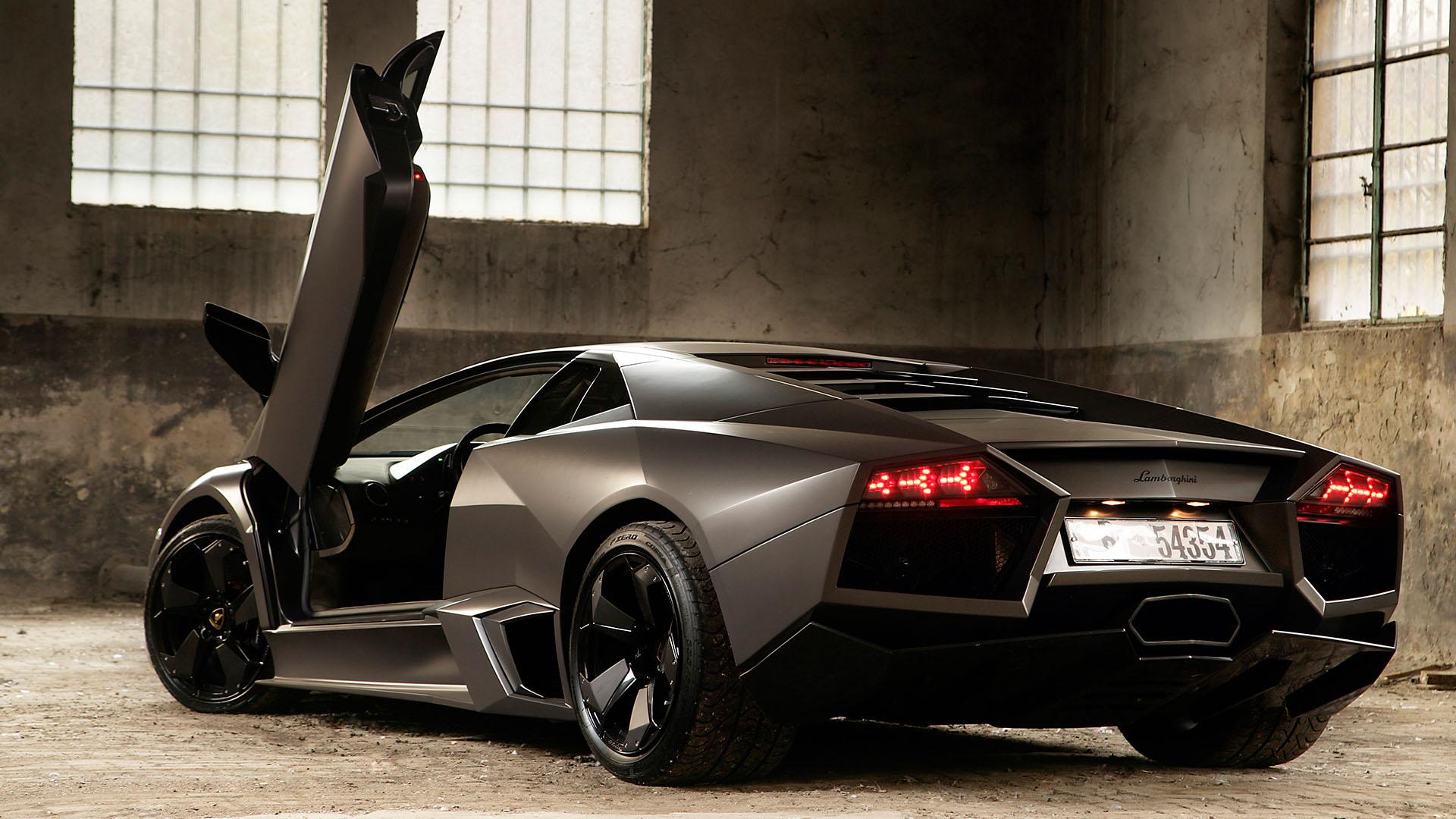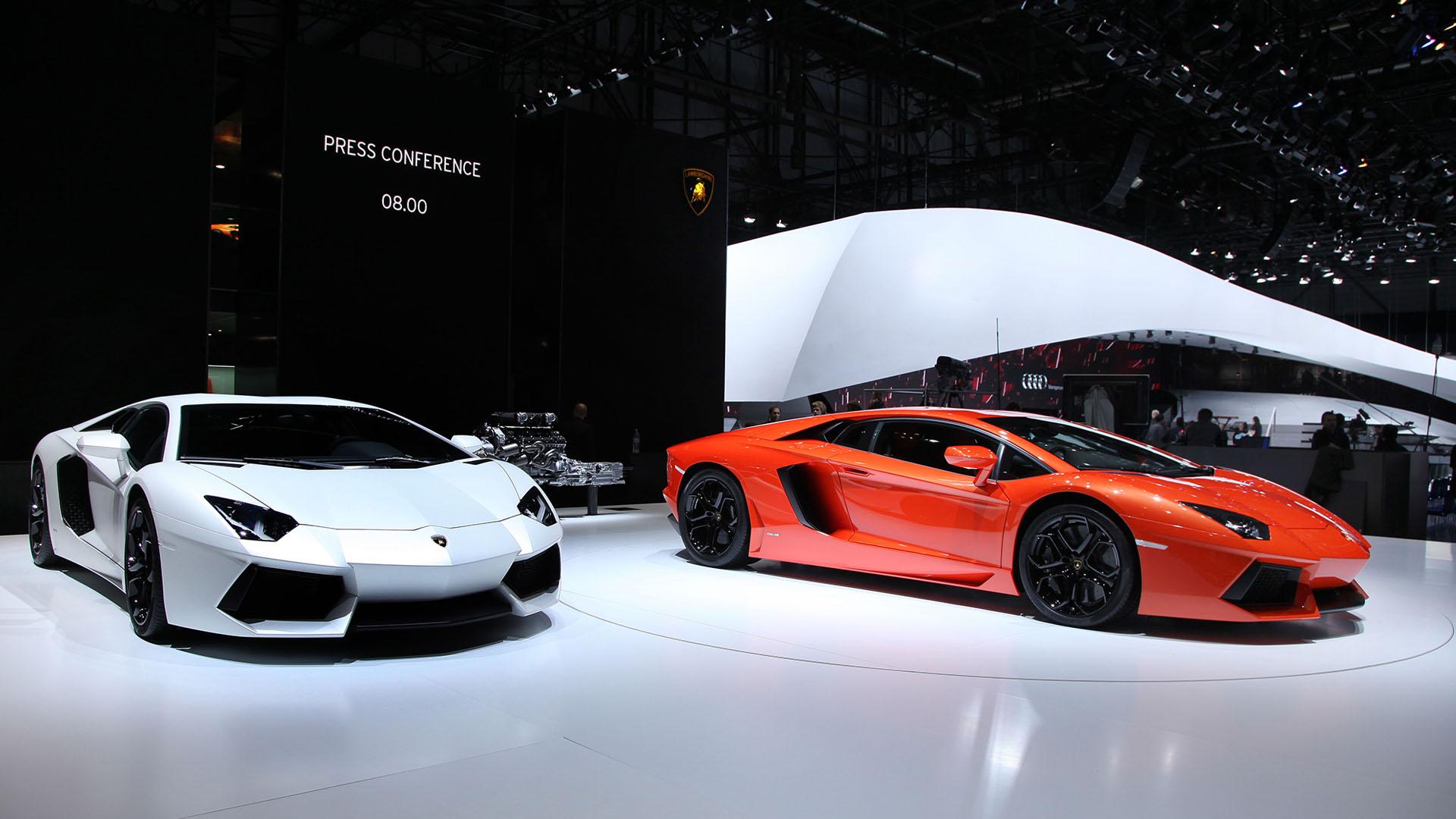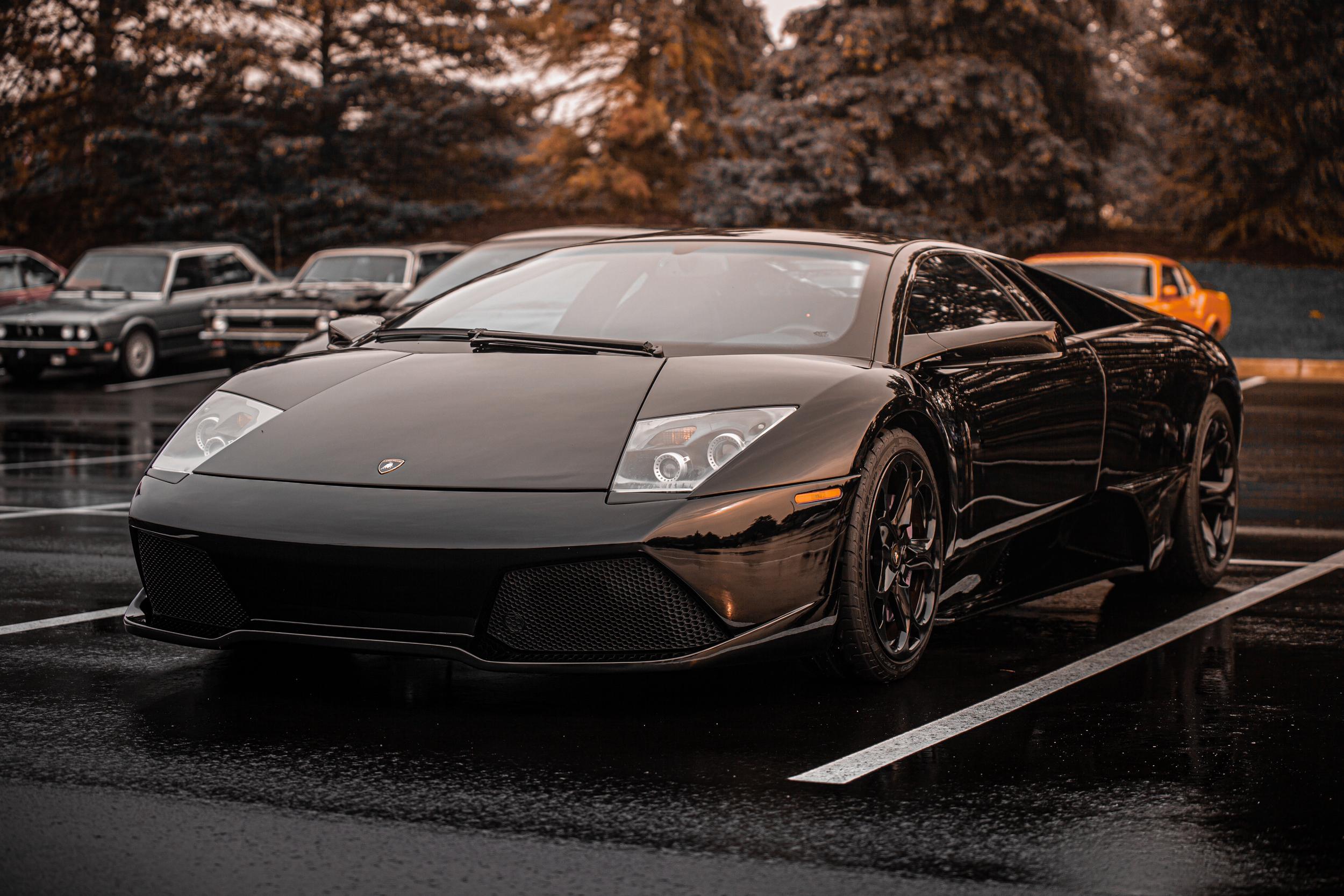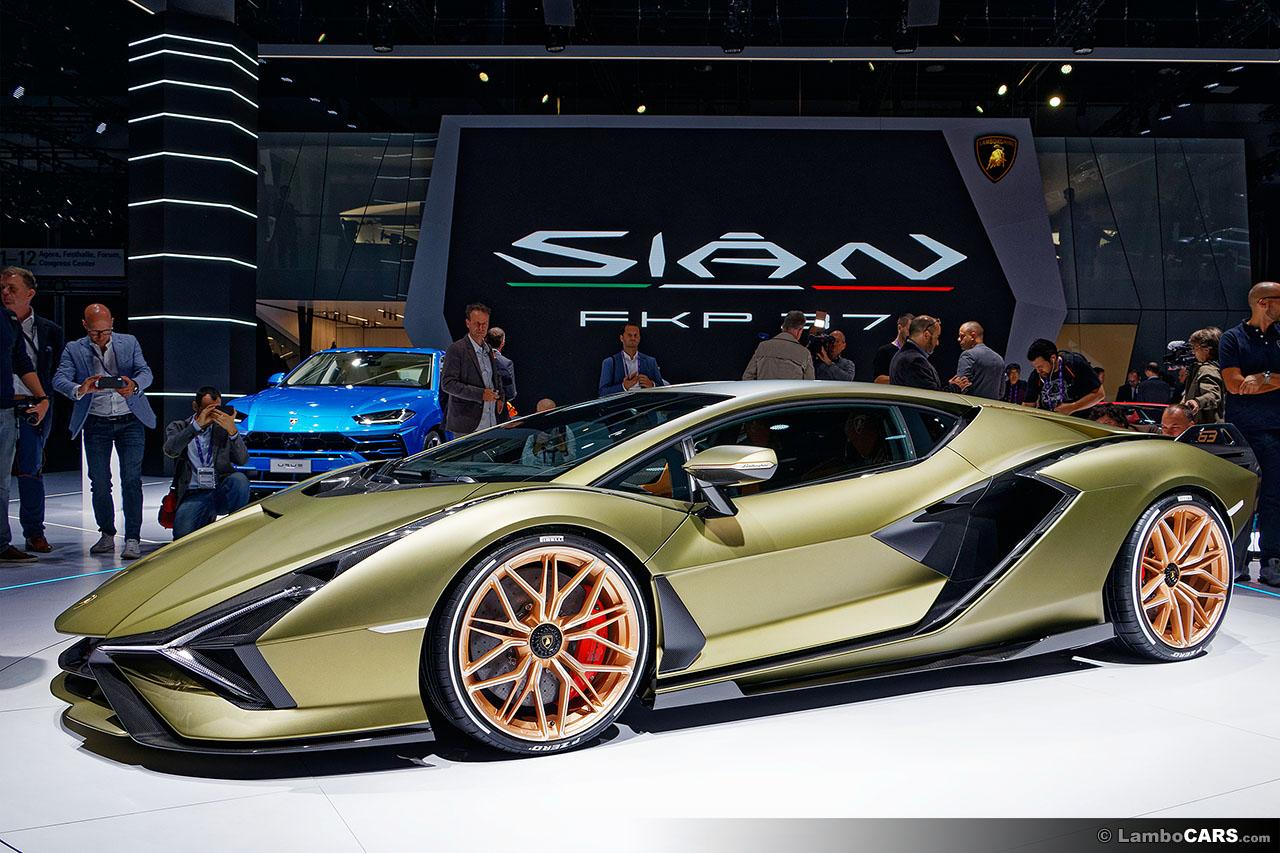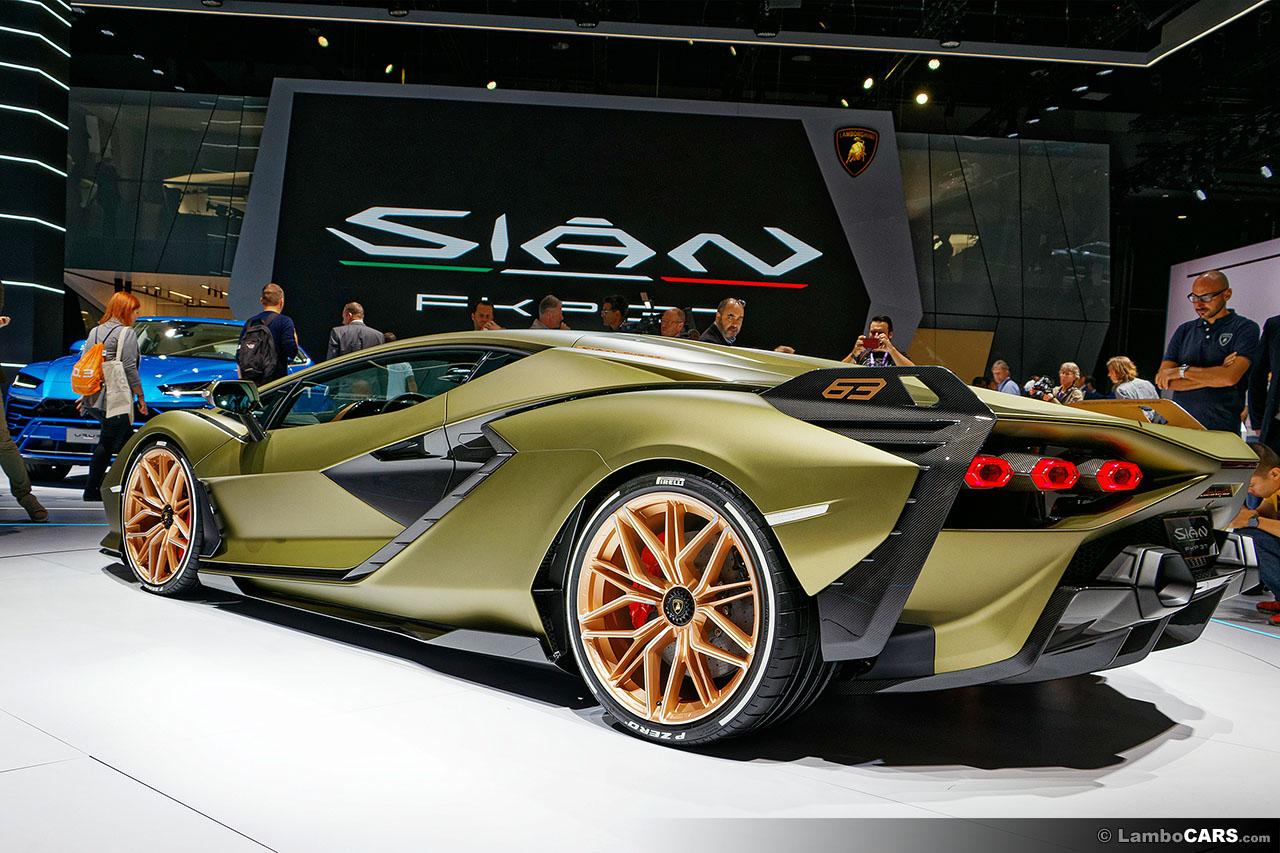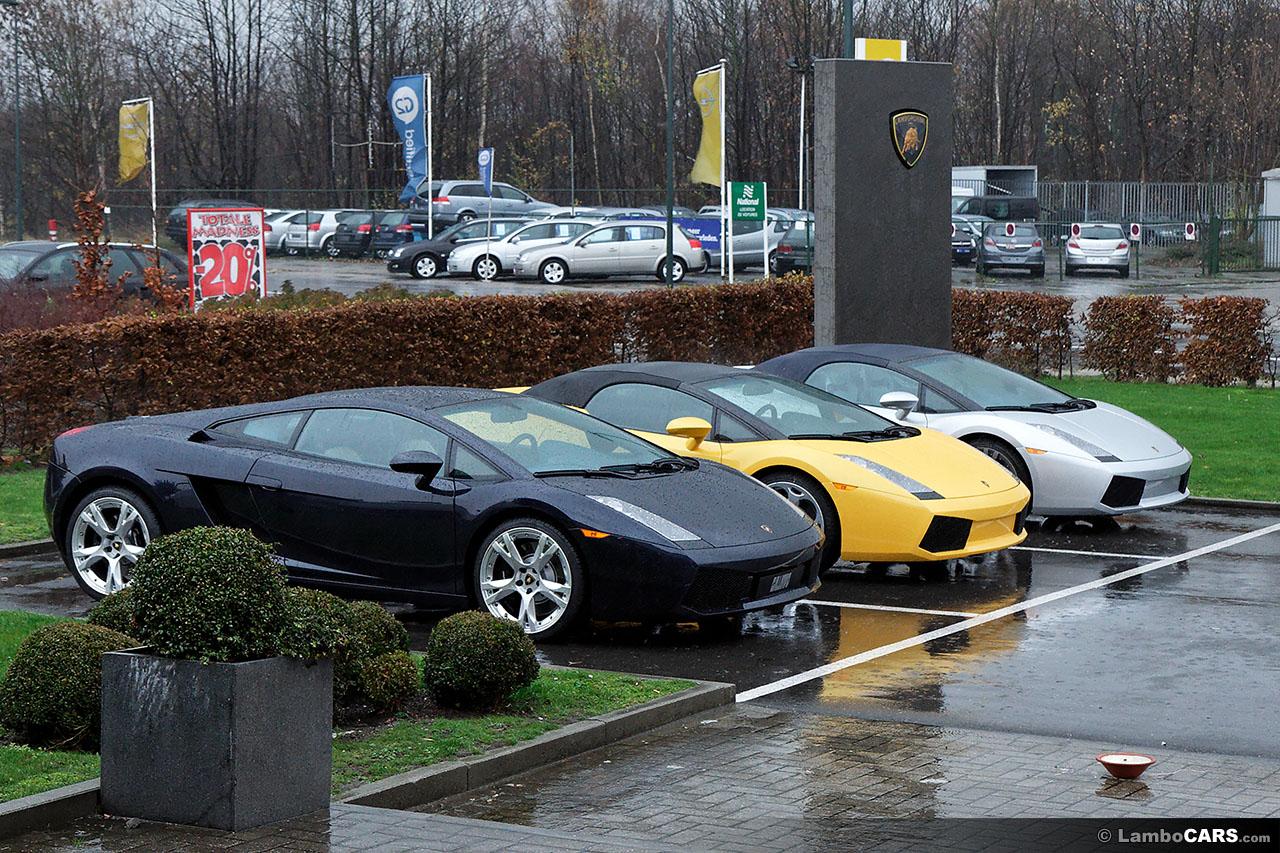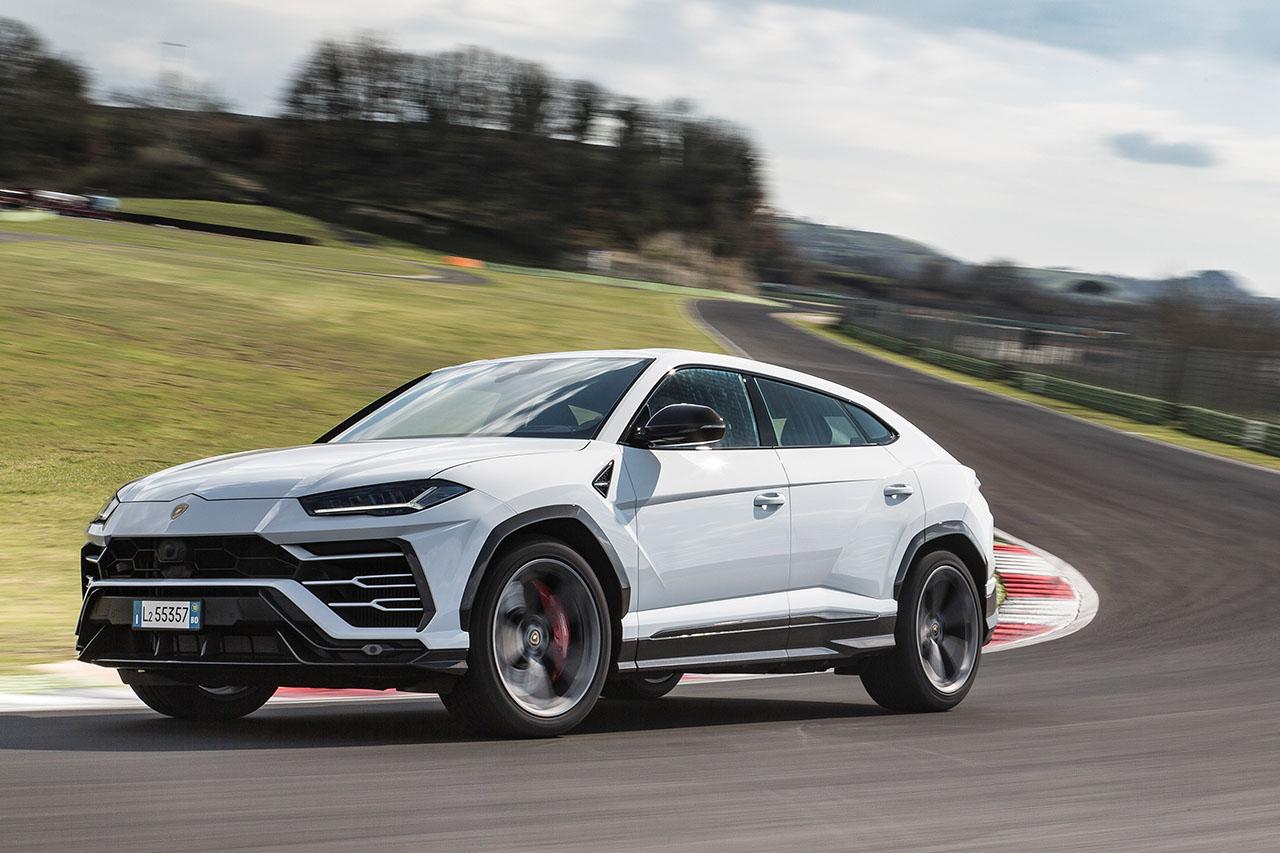I think we can all agree some Lamborghini models left a more permanent impression on the automotive world than others, and while every Lamborghini model since 1963 has its own place in history, in this article we take a look at the ones that really changed things for the cars that came after them, these are perhaps not the fastest, or the most expensive, but still, their production changed the history of Lamborghini, and sometimes the entire automotive market.
#1 – The 350 GT – Lamborghini’s Firstborn
The first Lamborghini on this list just has to be the first production car to leave the Sant’Agata doors, the 350 GT, and while it’s not a low-riding supercar, it is the car that would set the foundation for the next decades of production for Lamborghini, the 3.5-Liter V12 engine developed by Giotto Bizzarrini exclusively for the Lamborghini 350 GT would become the basis for every model from Sant’Agata right up to the Murciélago until 2010.
Perhaps the Lamborghini 350 GT isn’t that well known by the younger generation of car aficionados, but it’s a matter of looking at the past to understand the future, and while the first Lamborghini production car from the Sixties would evolve in models like the 400 GT 2+2, the Islero, and the Jarama … none of these names might ring a bell for many, but they are all part of the sometimes illustrious history of Automobili Lamborghini SpA, even to the extent of the larger Espada, still using that same V12 engine albeit evolved into a 4-Liter V12 by then.
I will admit the Lamborghini 350 GT didn’t influence other carmakers directly at first, at that time it was just one more V12 powered, comfortable Gran Tourer, but it was the seed planted by Ferruccio Lamborghini to start making history with his very own car factory, so that’s why I do consider this one a benchmark model for Lamborghini anyway, without the 350 GT we would never have seen our next model that really changed the world from the moment it was introduced.
#2 – The Miura – Automotive Art
I don’t think anyone can argue that the Lamborghini Miura changed the automotive world forever, this was the first supercar ever available for people to actually drive on the road, the entire concept of the Lamborghini Miura, with the engine behind the cockpit, the clamshell design for the front and rear section, and just how low this car was, had never been seen other than on a race track at that time, in fact, none other than Marcello Gandini acknowledged he was inspired by the Ford GT race car when he designed the Miura for Bertone.
The Lamborghini Miura was unlike anything else on the road back in the late Sixties, and this was the car that really launched Automobili Lamborghini SpA into the history books, the Miura was a gamechanger, and a nice anecdote is that Ferruccio himself had some reservations about this Miura. Remember Ferruccio wanted to build GT cars, high-speed V12 car, but still comfortable and luxurious … somehow the Miura didn’t really fit that idea, but after seeing the intricate chassis of the Miura and the placement of the engine, he got convinced it might be a good marketing move to build 50 units of the Miura … history would prove him wrong, and the Miura would become the benchmark for just about every supercar to come, both from Lamborghini and from other manufacturers.
Remember the Miura competition from Ferrari was the 365 GTB, also known as the Daytona, but in all honesty, Ferrari just didn’t have anything that could be compared to the Miura, neither did any other sports car manufacturer, the Miura was the first of a breed, the start of an entire supercar generation to come … and it was a Lamborghini, and while Ferruccio Lamborghini wanted to do a limited production run of 50 units, over the next years Lamborghini would sell over 750 units of the Miura in her three variations, the SV or Spinto Veloce being the ultimate production version.
I personally believe Lamborghini was able to sell even more Miura SV than the 150 units they managed to deliver between March 1971 and December 1972 (yes, I know Walter Wolf got an SV as late as 1975, but that one was built from spare parts), but once the alien-looking Lamborghini Countach was unveiled, Ferruccio decided to halt production of the Miura and only build the Countach … unfortunately it would take a few years to develop the Countach into a production model, during which I’m confident he could have sold a lot more Miura SV to customers.
#3 – The Countach – Introducing the Lamborghini Doors
And that brings us to probably the most important Lamborghini ever, and arguably the biggest game-changer in modern automotive history … the Lamborghini Countach, nothing like this had ever been seen in the Seventies, there had been some strange concept shown in the previous years, but the Countach would be built in almost the same shape and form as its bright yellow prototype that was presented at the 1971 Geneva Motor Show … and while some customers had their Miura finished in yellow, orange, or green, it would be the Countach that really set the pace for wild Lamborghini colors … the Countach is still the car of dreams 50 years later, and it will continue to be far into the future.
First, we had the V12 engine in the front for the Lamborghini GT cars, on the Miura they turned the engine 90° and placed it behind the driver and passenger known as Trasversale Posteriore, but on the Countach, they turned it another 90° to get it into Longitudinale Posteriore with the gearbox pointing to the front, this LP positioning of the massive V12 would become the trademark for all Lamborghini supercars to this date, and while the original narrow body LP400 with the famous periscope roof was the Countach that changed the world, I’m sure most people have a more vivid recollection of the later S and QV models with the insanely wide wheels, flared fenders … and that outrageous rear wing, that didn’t do anything aerodynamically speaking on the Countach, it didn’t even provide more downforce due to the angle they installed it, in the end, it even slowed the car down a little because of the additional drag … but it looked amazing nonetheless.
More importantly, the Lamborghini Countach introduced the upward-opening doors that would become a trademark for Lamborghini on their V12 flagship models, also the side profile of every Lamborghini V12 after the Countach would revert to the single line design running from the front to the rear of the car and show a ‘cab-forward’ style where the cockpit of the car sits further to the front of the car when compared to GT cars, for instance, a design feature that was probably necessary because of that massive V12 at the middle of the chassis, so while the Miura would be considered as the first supercar in history, the Countach would set the trend for supercars from the Seventies onward.
Lamborghini Diablo – The New Countach?
And then we need to think about which Lamborghini was their next benchmark model, so we come to the Lamborghini Diablo, a car introduced under the Chrysler reign, and while I do love the Diablo GT limited edition and the MY99 Diablo SV with the fixed headlights, I don’t really think there is a model during the Diablo production that made a change, that would stand out of the crowd at a meeting. Don’t get me wrong, I know how the Diablo kept Lamborghini alive during the Nineties, without it, we would have lost this stunning brand, but the Diablo was just a great supercar, the VT introduced the all-wheel-drive to Lamborghini that would be used from that moment on, but to call it a benchmark model … I wouldn’t go that far.
Same with the Diablo SE30 and even more so with the JOTA derivative … absolutely gorgeous cars, especially in that bespoke lavender metallic over a blue Alcantara interior, again a great car, and they are getting very valuable lately … but what did it change in Lamborghini’s history other than keeping the brand alive? I do want to mention two of the Diablo models as somewhat of a gamechanger, the Diablo SVR and later the Diablo GTR … I do believe these bespoke build racecars set the pace for what we have today in the Super Trofeo championships, both the Diablo SVR and its successor the Diablo GTR were only built for a single make racing championship during which professional pilots and gentleman drivers competed against each other on some of the world’s most famous tracks … while all driving exactly the same car, just like the current Super Trofeo series.
Lamborghini Murciélago – An Evolution of the Diablo
That takes us to the next supercar in Lamborghini history, the 2001 Lamborghini Murciélago, the first new car to be unveiled after the Audi AG takeover, and a car designed not by Italians, but by Luc Donckerwolcke, from Belgium … rumor has it someone told him upon his arrival in Sant’Agata: “we’ll build the engine, you just design a nice body around it”, and it has to be told that the design went from a more rounded Diablo to a much more angular styled Murciélago, that same angular feeling would later become evident on the Gallardo too, more on that Bull later on.
So how important in the global scope of things was the Murciélago for Lamborghini then, was this a game-changing benchmark model in automotive history … or was it just another supercar like the Diablo it succeeded? If you ask me, I would say the Murciélago was just a logical evolution to drag Lamborghini into the next step of the evolution, sure it had more power, was relatively comfortable, and looked good, especially when they evolved into the LP640 version and later the impressive LP670-4 Super Veloce edition … but did any of these change history like the Countach did back in the Seventies? Not really, right?
Let’s think about this some more, when the Lamborghini Countach was turned into a production model, it used a steel tube spaceframe chassis, massive V12 engine placed longitudinally behind the cabin, between the mid-Seventies and 1989 the Countach was in production and nothing changed on the chassis apart from different suspension for the wider wheels, but it was still a space frame made from steel tubes. Now we get the Lamborghini Diablo in 1990 … and guess what, it has a chassis made from steel tubes into a spaceframe with a slightly larger V12 engine smack in the same position, a few inches behind the driver and passenger, and still mounted lengthwise. A little over ten years later we get the brand new Murciélago … but wait, is it that new? Nope, still a steel tube spaceframe chassis, with a 6.2-Liter V12 engine in exactly the same position as on the Countach and the Diablo … so in the end nothing earth-shattering changed from back in the Seventies until 2011 when the Aventador came around, only a logical evolution in styling and performance.
#4 – The Reventón – The First ‘Few-Off’
But I want to bring one specific model during the Murciélago production into the spotlights as a benchmark model, the 2007 Reventón for being the first, limited production model that came with a complete restyle on top of an existing chassis. Sure the Diablo SE30 was also limited and numbered, as was the Diablo GT, and both had bespoke body parts … but the Reventón was the first model in Lamborghini history to get its entire body replaced with bespoke parts, and it even got its own custom paint … for the first time in Lamborghini history they used a satin topcoat on top of metallic paint, all 20 Lamborghini Reventón were finished in the same satin grey metallic with a slightly green hue over a unique interior.
All the limited edition or anniversary editions before the Lamborghini Reventón, like the Countach 25th, the Diablo SE30, and the Murciélago 40th were limited editions (the intention was to build only a few Countach 25th Anniversary models, but as they didn’t get the Diablo ready in time, it became the best-selling Countach ever), but they only demanded a small premium over the, at the time, regular model, same with the Diablo GT for instance, it was more expensive than the Diablo VT 6.0 but not double or triple the price. That was a trend that started with the 2007 Reventón for Lamborghini, they charged €1,000,000 for each of the 20 cars, while the Murciélago LP640 was €215,000 at the time … with the Reventón Lamborghini created their first ‘few-off’ as they would call them, and those came at a substantial premium over the normal production cars, usually quadruple the price, a marketing trick they would repeat with the Veneno, the Centenario, and the Sián later on when the Aventador was in production.
Lamborghini Aventador – New Chassis and Engine
The first Lamborghini to be a revolution in terms of chassis construction since the Countach would be the 2011 Aventador, no longer using a steel tube spaceframe chassis, but reverting to a much more modern carbon fiber monocoque construction, and also a revolution in terms of the engine, while still a V12 and being mounted lengthwise behind the occupants, the Aventador V12 was not another evolution of the original Giotto Bizzarrini design, but a new, lower design created specifically for this new flagship model.
Is the Lamborghini Aventador a benchmark model then? Did it change history for the automotive world, or for Lamborghini itself? It sure was a gamechanger for Lamborghini, and to be honest, at this time she’s still the best performing supercar for the money, sure there are hypercars that would leave an Aventador SVJ in a cloud of dust, but they also require a much healthier bank account to acquire and maintain. Considering a top of the line Aventador comes in at $600,000 or so … just about any other car on the market that can beat the Aventador performance-wise is well into the 7 figures, and we don’t even mention the visual impression an Aventador has … the doors still go up, and an Aventador will always draw attention, no matter where you show up.
Initially, Lamborghini planned to build a total of 4,000 Aventador, they had their in-house carbon fiber production facility with molds ready to build up to 4,000 units, but this V12 flagship became so popular that they quickly sold out, and Lamborghini decided to order more molds so they could build a lot more, and they are still building the Aventador to this date, with a successor on the horizon for 2023, we’ll be seeing a lot more V12 Aventador based cars leave the gates at Sant’Agata over the next two years.
#5 – The Sián – Lamborghini’s First Hybrid
A real gamechanger for Lamborghini was presented at the 2019 IAA in Frankfurt, a car that had been rumored for a very long time, potential clients had to secure a downpayment over a year earlier, so when the Lamborghini Sián FKP37 was finally shown to the public all of the 63 units were sold out, this was yet another few-off model that came at an immense premium over the model it was based on (the Aventador this time) but that’s not why the Sián made this list … the fact that it’s the first production hybrid Lamborghini makes it noteworthy.
The Lamborghini Sián comes with a Super Capacitor behind the seats that powers an electric motor that adds 34 hp to the naturally aspirated V12 brute behind the cabin, it improves acceleration, and being as it’s not a normal battery, the weight penalty isn’t that great, you get 34 hp more for just 34 kg more in overall weight, that’s a very nice tradeoff, and with the Sián being the testbed for the Aventador successor in terms of electrification, the Sián is a benchmark model that changes the history of Automobili Lamborghini SpA.
As mentioned by Stephan Winkelmann in a recent interview, Lamborghini intends to be the first supercar manufacturer to have its entire line up as hybrids by 2024, with the facelifted Urus Super SUV and the successor to both the Aventador and the Huracán, there is even the intention to add a fourth model to the lineup in the second half of this decade as a full-electric GT model … Lamborghini is going green in a hurry it seems.
I think the list above just about sums up what are the real game-changing, benchmark Lamborghini models over the last 58 years, since 1963, and I know there are several really amazing Raging Bulls missing from this list, but personally, I don’t think they changed the automotive landscape as much as the 350 GT, the Miura, the Countach, the Reventón, and the Sián … those will go down in history as the trendsetters in automotive history, but I do want to add some of my ‘honorary mention’ models below, just because they were important in getting Automobili Lamborghini SpA to where it stands today, but they didn’t really ‘change the game’ as much as the five main Bulls listed earlier.
Honorable Mentions
Lamborghini Gallardo – The V10-Powered Youngster
How could the best-selling, entry-level Lamborghini be missing from this list you might ask … but let me turn that question around, what did the V10-powered Bull change in the automotive world other than selling 14,022 units during its lifespan at Sant’Agata. I will give the first answer right now … the Lamborghini Gallardo opened up Lamborghini ownership to a completely different market segment, the Gallardo became the ‘smaller’ Lamborghini next to the insanely expensive V12 flagship. Make no mistake, a Gallardo was still an expensive car to buy new, but a lot more affordable than a Murciélago at that time.
And personally, I feel that’s also the downfall of the Lamborghini Gallardo in the end, the same is now happening with her successor, the Lamborghini Huracán, both V10 powered Bulls are amazing cars on their own, and they are great to drive, but look at the Gallardo on the second-hand market today (and I’m sure the same will happen to the Huracán a few years down the line). Buying a Gallardo today, almost 10 years after the last one was sold, isn’t an earth-shattering havoc-wreaking event on your bank account anymore, you can buy a Gallardo for the price of a well-optioned family car these days, and that’s the downfall of the model.
There are no ‘holy grail’ Gallardo out there, sure a Superleggera or the later Super Trofeo Stradale of Squadra Corse specials are really amazing cars to drive, but they will never become million-dollar cars like the Miura and Countach are today, some Diablo models will get there, like the SE30, the SE30 JOTA, and the GT, as will the Murciélago Super Veloce for instance … but not any of the Gallardo, they aren’t rare enough for that to happen any time soon, and I firmly believe prices on any Gallardo haven’t bottomed out yet.
And the same is now happening with the Lamborghini Huracán … there are way too many of them on the market, perhaps some special edition will be more valuable compared to a standard LP610-4, but both the Gallardo and the Huracán will forever keep their ‘Baby Lamborghini’ stamp with them … and in the years to come people will always tend to set one of the V12 models as their ultimate goal … sure they’ll get a Gallardo or Huracán first, but they will always try to upgrade to a ‘real’ Lamborghini, and that will forever remain one of the V12 flagship models.
Lamborghini Urus – The Moneymaker
When Lamborghini unveiled the Estoque concept in Paris back in 2008 I was there for the press conference, and the massive four-door was impressive and beautiful in a Lamborghini kind of way, the interior was amazing in all white, but sadly the marketing department saw more in an SUV to be a third model next to the two supercars already in production, so they came up with the Lamborghini Urus, the Super SUV as they like to call it.
Also note that with adding the Lamborghini Urus as the third model in the lineup, they reached a milestone that had been eluding them since the Eighties, when we had the Countach, the Jalpa, and the LM002 together in production at the same time, after that, it would usually be either just the V12 model and from 2003 on a V10 was added for a two model price list … but it would be the Urus that once again added a third model to the dealer showroom, and apparently it will be after 2025 when we will be seeing a fourth model being introduced.
So while the Lamborghini Urus is important in terms of sales and revenue, and it surely helped to make Automobili Lamborghini SpA a healthy, profitable company, I wouldn’t go as far as making it a benchmark model for the Raging Bull or the automotive scene in general, but the Urus will mark her place in Lamborghini’s history, that’s for sure.

